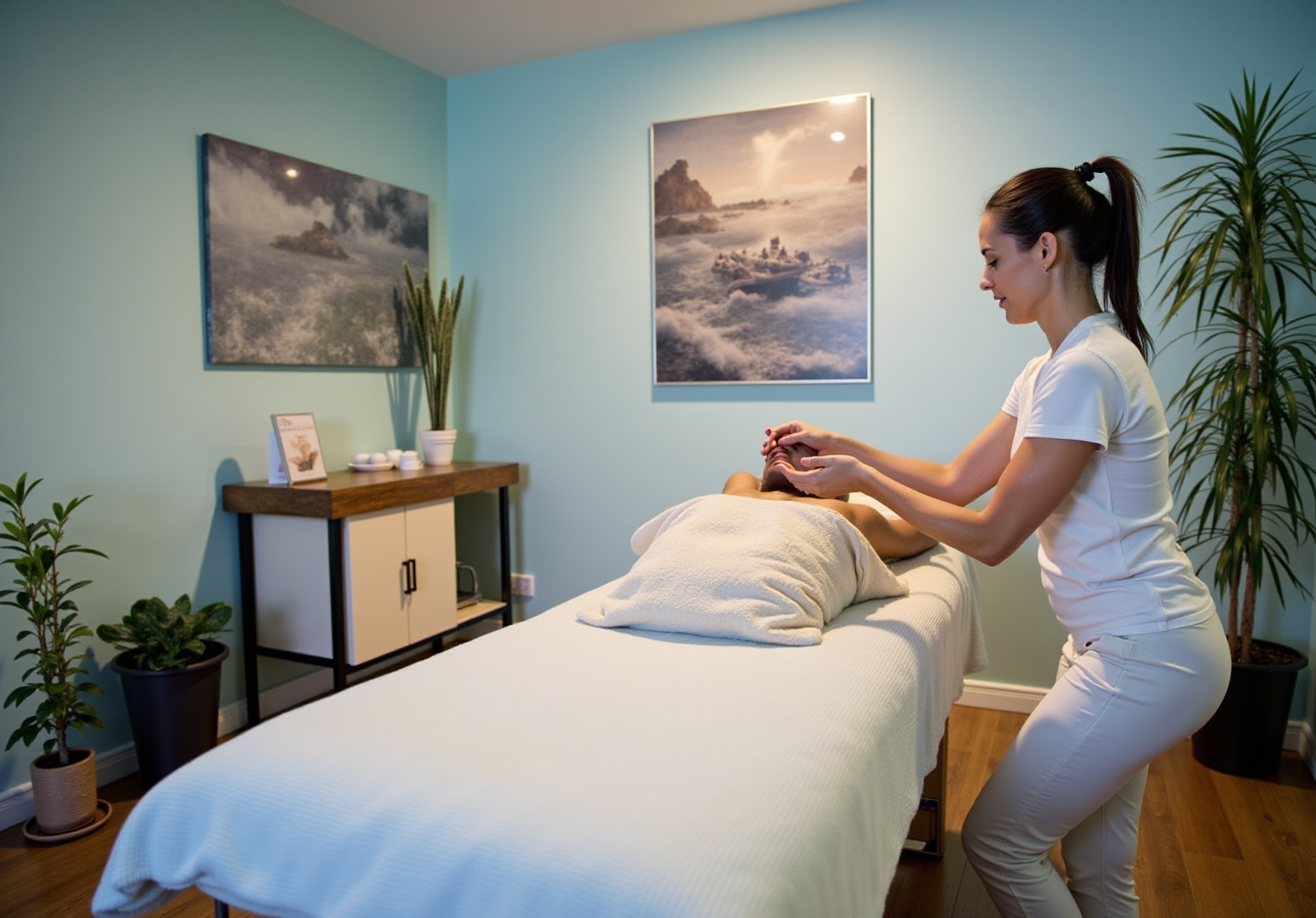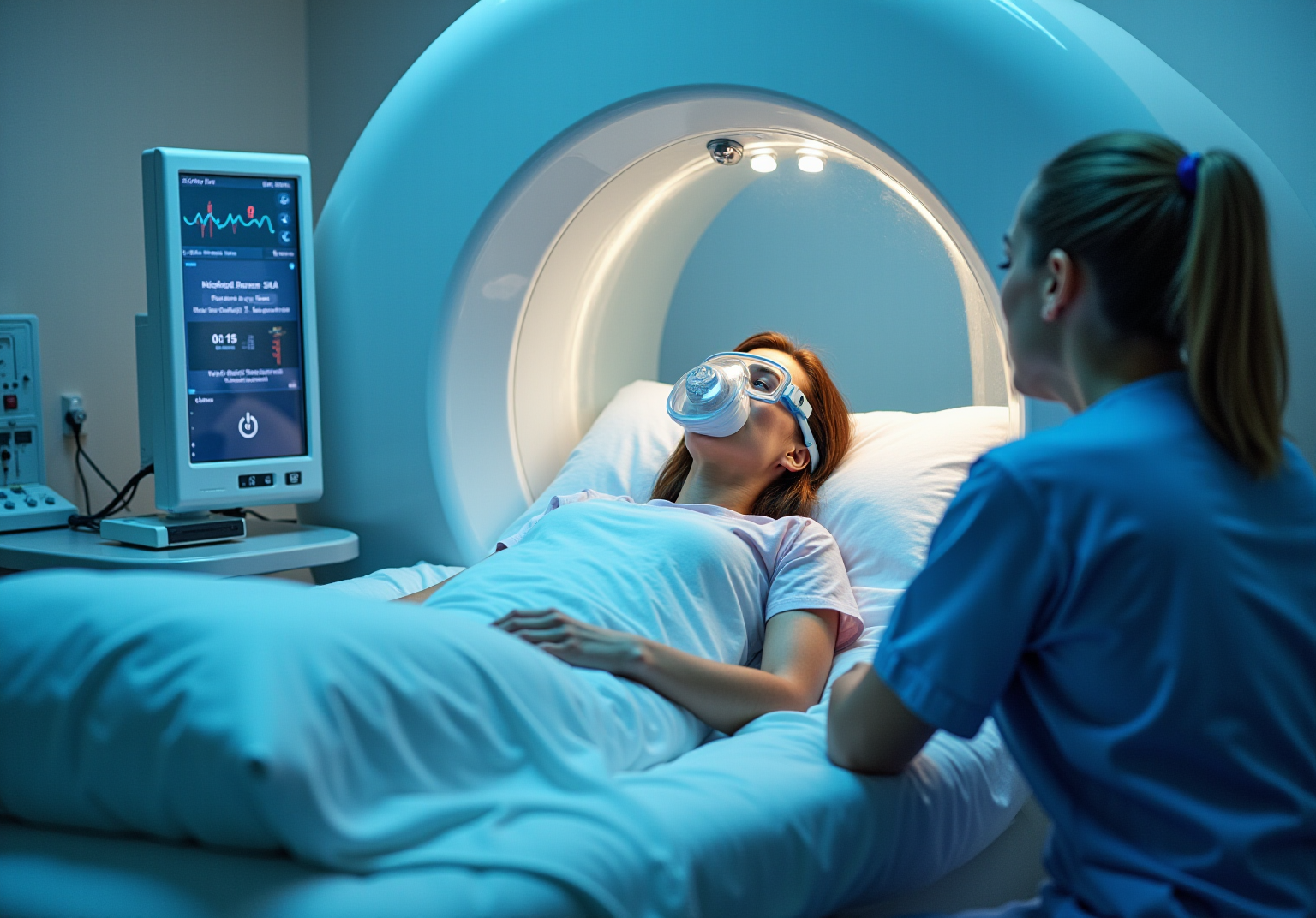Master Hyperbaric Oxygen Therapy: Benefits, Procedures, and Risks
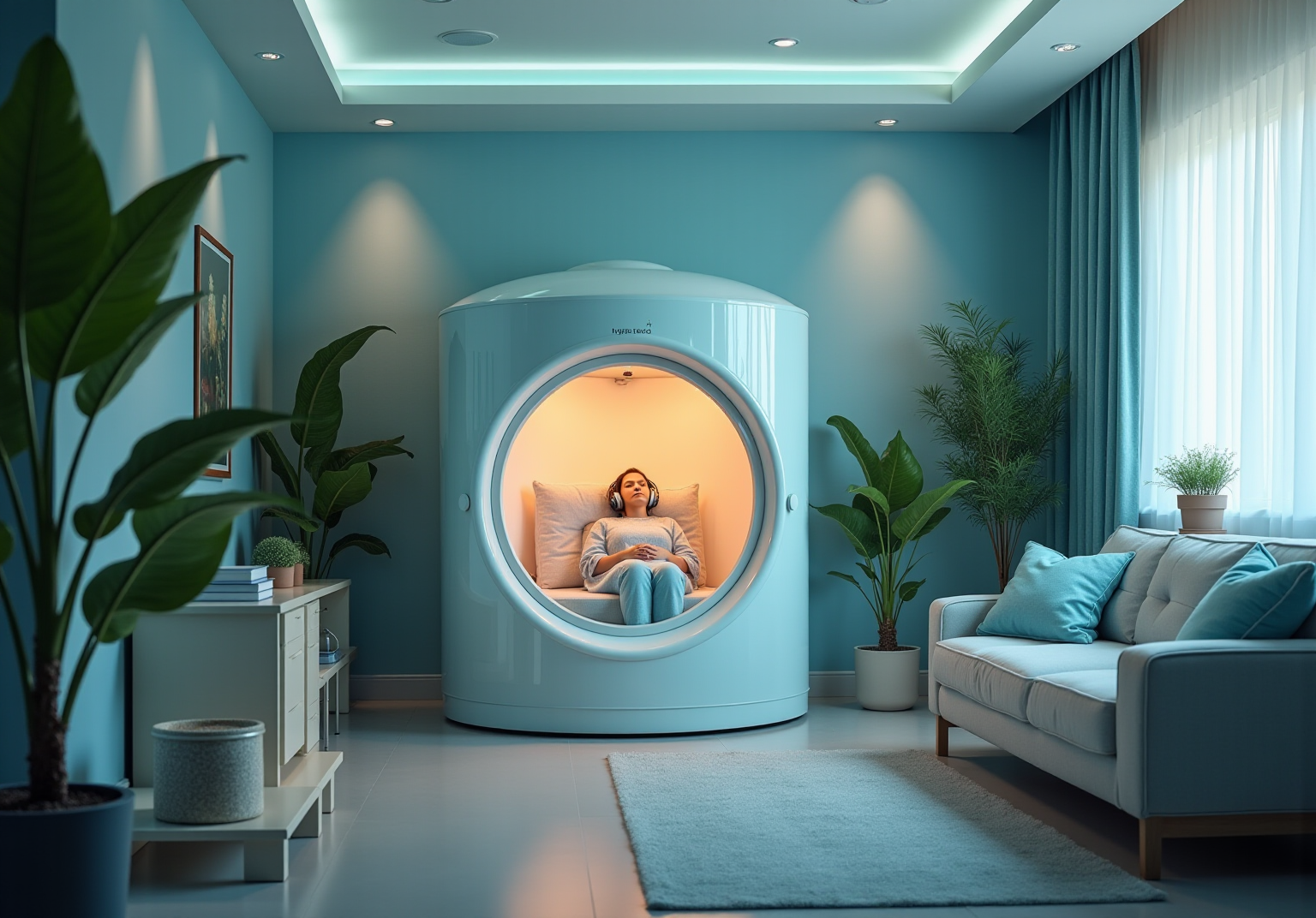
Overview
Hyperbaric Oxygen Therapy (HBOT) presents a compelling array of health benefits, such as:
- Accelerated wound healing
- Enhanced immune function
- Reduced inflammation
These advantages position HBOT as a vital treatment option for various medical conditions. By increasing oxygen supply to tissues, HBOT promotes recovery and healing, a mechanism supported by extensive research. Studies indicate significant improvements in patients' quality of life following treatment, underscoring the therapy's effectiveness. For those seeking innovative medical solutions, exploring HBOT could be a transformative step towards better health outcomes.
Introduction
Hyperbaric Oxygen Therapy (HBOT) stands at the forefront of innovative treatments, presenting a multitude of health benefits, from expediting wound healing to improving athletic recovery.
By immersing patients in a pressurized environment where they inhale pure oxygen, this therapy not only elevates oxygen levels in the bloodstream but also catalyzes cellular repair and regeneration.
Despite its promising advantages, it is crucial to acknowledge the potential risks and contraindications that necessitate careful consideration.
What are the true capabilities of HBOT, and how can individuals adeptly navigate its complexities to fully harness its healing potential?
Define Hyperbaric Oxygen Therapy and Its Mechanism
Hyperbaric Oxygen Treatment (HBOT) is a specialized medical procedure that involves inhaling pure air in a pressurized environment, significantly increasing the amount of air dissolved in the bloodstream. This enhanced availability of air is vital for accelerating the body's healing processes. The fundamental mechanism of hyperbaric therapy is rooted in the principles of physics and physiology: increased pressure allows the body to absorb more air, and regeneration. This treatment not only stimulates the release of growth factors and stem cells but also , thereby .
At Tsavo Wellness, HBOT is administered through the AirPod mHBOT, operating at an atmospheric pressure of 1.3ATA, which to cells and tissues by up to 50%. Recognized for its non-invasive nature, this wellness therapy effectively , , strengthens the immune system, and alleviates oxidative stress. A single 60-minute treatment offers benefits comparable to consuming 60 liters of hydrogen-infused water, delivering fast and effortless health improvements. While in the chamber, clients can relax, listen to music, meditate, or use their devices, maximizing the therapeutic experience.
is especially advantageous for various medical conditions, such as decompression sickness, carbon monoxide poisoning, and chronic wounds. Research indicates that oxygen is the essential and rate-limiting element in healing, and the use of hyperbaric oxygen therapy can significantly enhance the oxygen supply to damaged tissues, promoting quicker recovery. For instance, a study on the long-term results of hyperbaric oxygen therapy showed substantial improvements in quality of life, sleep quality, and pain intensity in post-COVID conditions, with benefits persisting for up to a year after treatment.
Medical professionals underscore the importance of hyperbaric oxygen therapy in various therapeutic applications. It has been observed that this therapy can positively influence inflammation and immune response, particularly benefiting individuals with chronic conditions. Typically, sessions last between 60 to 90 minutes, with the to the specific medical condition being treated. Overall, the hyperbaric oxygen therapy offered at Tsavo Wellness represents a promising supplementary treatment option that across diverse patient populations.
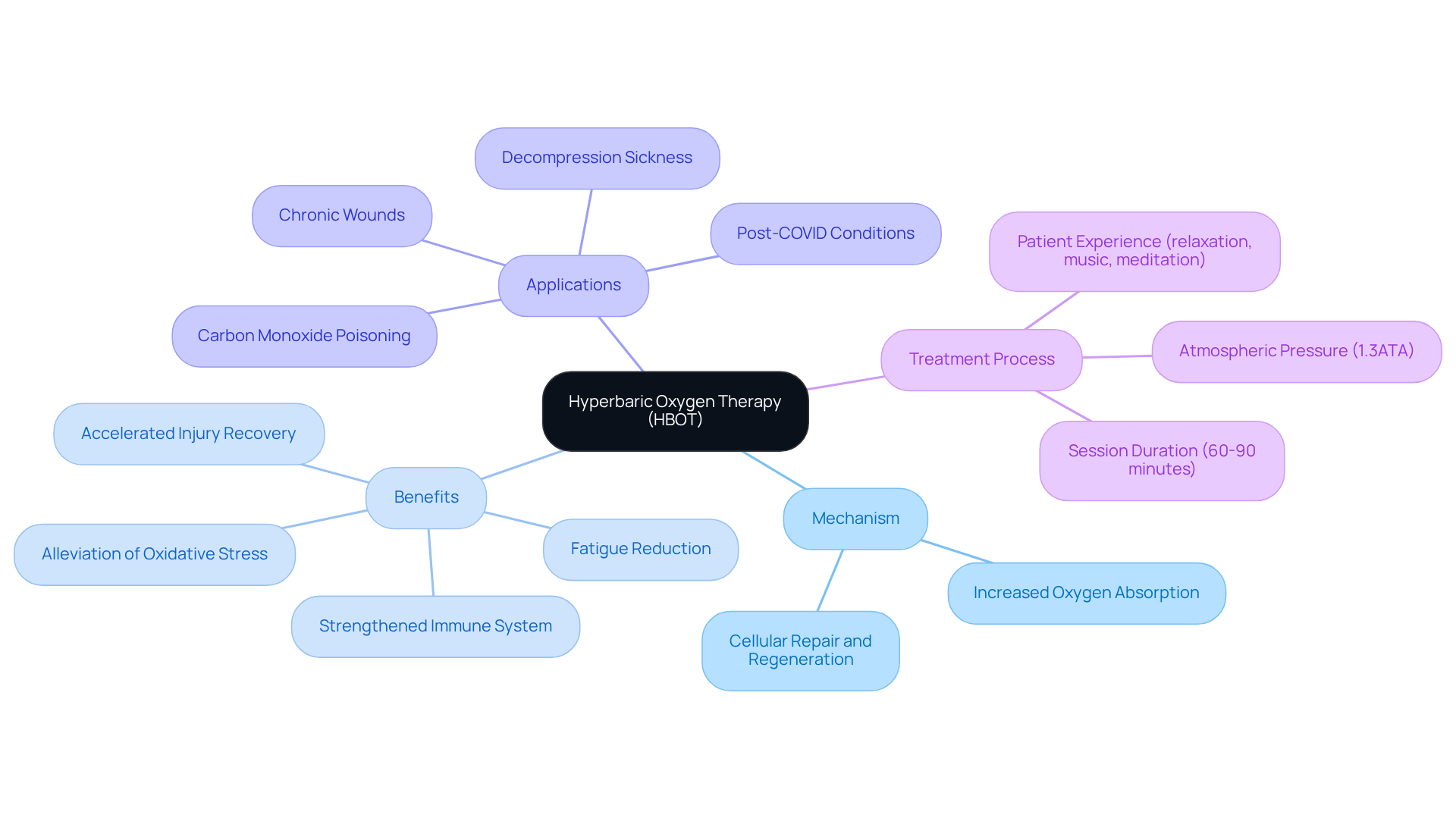
Explore the Health Benefits of Hyperbaric Oxygen Therapy
provides a comprehensive array of health benefits, firmly supported by extensive research. Notably, these advantages include:
- Enhanced : HBOT significantly boosts oxygen supply to tissues, expediting the healing process for chronic wounds and injuries. Studies have shown that individuals who undergo hyperbaric oxygen therapy experience such as radiation-induced injuries, with lasting benefits observable for up to five years after treatment.
- Athletes frequently utilize hyperbaric oxygen therapy for . This therapy effectively and fosters tissue repair, enabling athletes to resume their training regimens more swiftly. For instance, the Philadelphia Phillies have integrated hyperbaric oxygen therapy into their recovery protocols, resulting in noticeable enhancements in player performance and injury recovery.
- : The increased oxygen levels achieved through hyperbaric oxygen therapy can enhance the body’s immune function, equipping it to better combat infections. This is particularly advantageous for athletes who may face heightened susceptibility to illness during intense training periods.
- can be achieved through hyperbaric oxygen therapy, which has proven effective in mitigating inflammation and is beneficial for managing conditions such as arthritis and other inflammatory diseases. This reduction can contribute to and well-being.
- have been highlighted in emerging research, suggesting that hyperbaric oxygen therapy may enhance cognitive function and memory, particularly for individuals recovering from brain injuries or strokes. Athletes have reported improvements in focus and decision-making abilities following sessions of hyperbaric oxygen therapy, indicating its potential for cognitive enhancement.
These benefits establish HBOT as a valuable element of wellness programs, particularly for individuals seeking to optimize recovery and elevate their overall health. At Tsavo Wellness, the Airpod Hydroxy treatment not only supports these benefits but also aids in and reduces oxidative stress, further promoting well-being. The Airpod achieves mild hyperbaric treatment pressures of up to 1.3 ATA, enhancing oxygen absorption by approximately 35%, thereby significantly boosting the treatment’s effectiveness. However, it is crucial for corporate executives contemplating hyperbaric oxygen therapy sessions to consider the associated costs, which typically range from $250 to $600, as this may influence their decision-making. Moreover, while the use of hyperbaric oxygen therapy is generally safe, it is important to acknowledge potential risks such as ear discomfort and sinus issues to provide a well-rounded perspective.
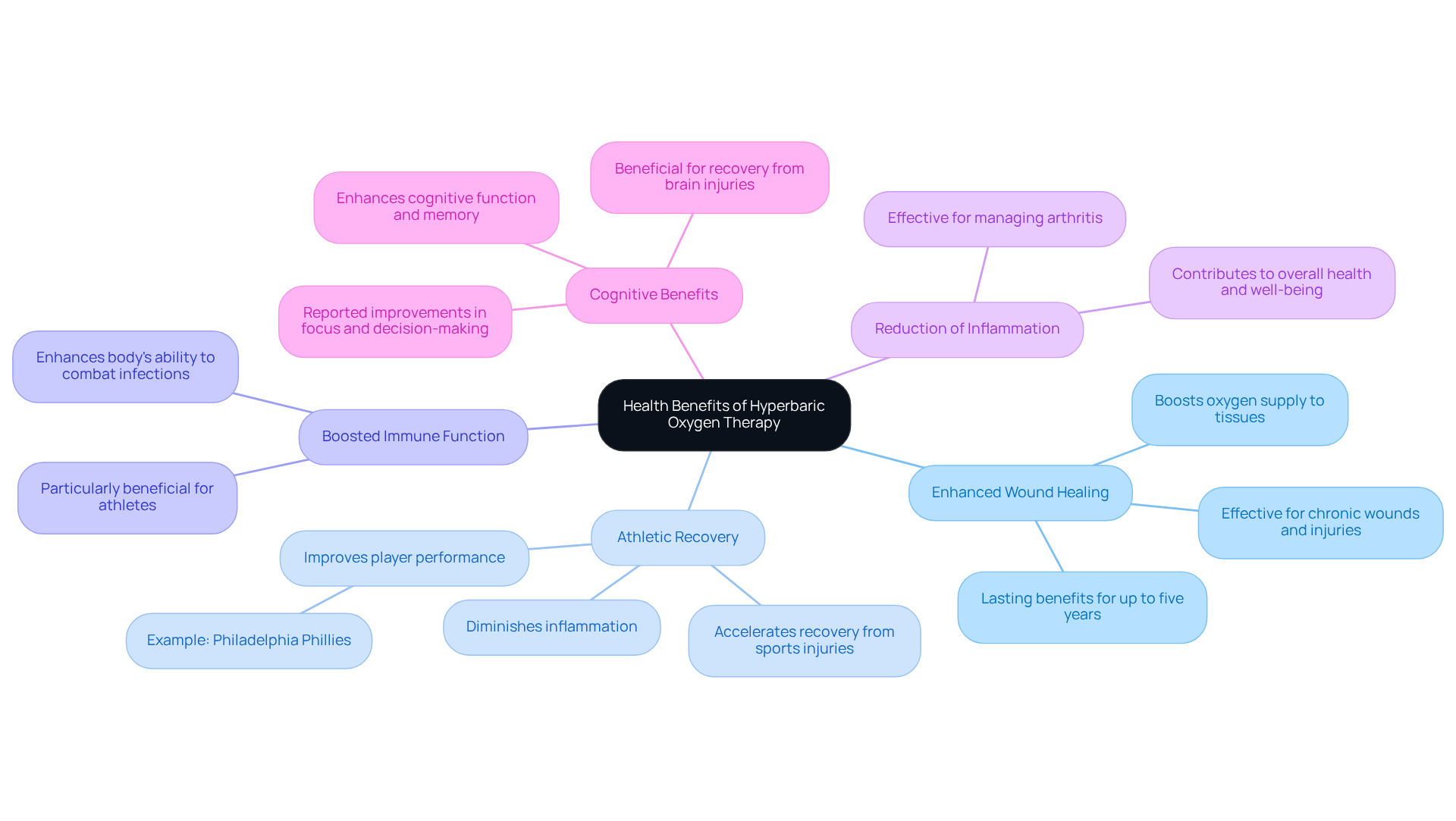
Understand the Procedures and Preparation for HBOT
Preparing for is a critical process that demands attention to detail to ensure both safety and effectiveness. A is essential to evaluate individual health conditions and confirm suitability for hyperbaric oxygen therapy. This initial step not only identifies any but also allows for the customization of the care plan, thereby enhancing the .
Patients are advised to adhere to specific , which include:
- Avoiding certain medications that may interfere with breathing absorption
- Refraining from smoking prior to the procedure
Following these recommendations is vital for and minimizing its associated risks.
During the hyperbaric oxygen therapy session, patients will enter a where the pressure is gradually increased. They will participate in hyperbaric oxygen therapy, breathing pure oxygen for a duration typically ranging from 30 minutes to two hours, depending on the prescribed treatment plan. Continuous supervision and monitoring of patients are paramount to ensure .
is equally important. Patients may experience mild side effects, such as ear discomfort or fatigue, which generally resolve quickly. It is crucial to follow any post-treatment instructions provided by the healthcare team to support optimal recovery.
Understanding these processes not only helps clients feel more comfortable and prepared for their treatment but also significantly .
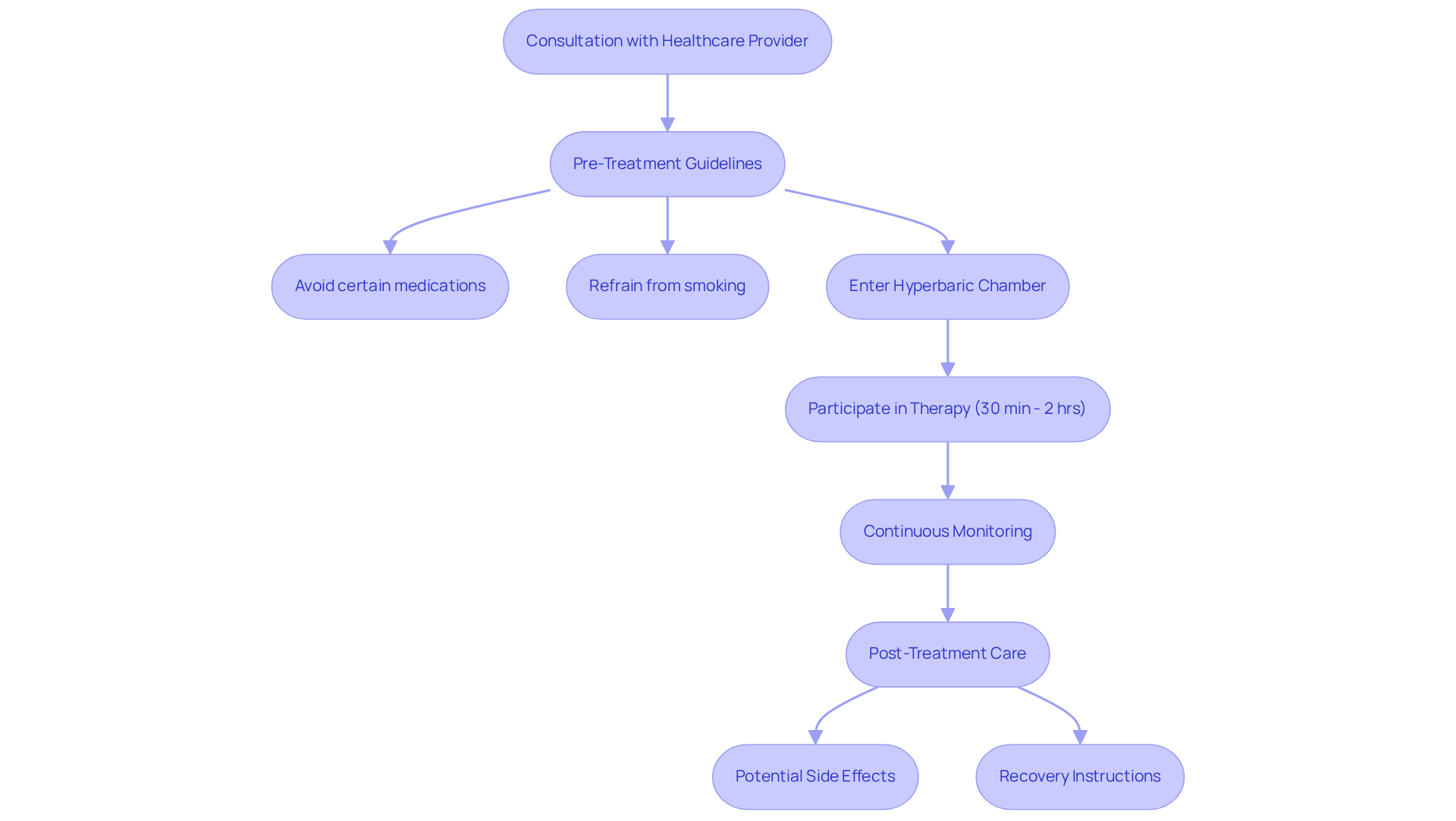
Identify Risks and Contraindications of Hyperbaric Oxygen Therapy
is widely recognized for its therapeutic benefits; however, it is essential to acknowledge the associated .
- is a significant concern, arising from pressure changes that primarily affect the ears and sinuses. The incidence of middle ear barotrauma (MEB) during hyperbaric oxygen therapy varies significantly, with reports ranging from 2% to 84%. Effective air equalization techniques and patient education are crucial in minimizing this risk.
- is another critical factor to consider. Prolonged exposure to elevated levels of oxygen can lead to toxicity, impacting both the lungs and central nervous system. The risk of oxygen toxicity seizures increases with higher treatment pressures, necessitating careful monitoring and adherence to established treatment protocols to mitigate this risk.
- in determining suitability for hyperbaric oxygen therapy. Certain health issues, such as untreated pneumothorax, specific lung diseases, or recent surgeries, can render individuals unfit for this therapy. Screening for pulmonary conditions is essential to prevent complications like pulmonary barotrauma, which can lead to serious outcomes such as pneumothorax or arterial gas embolism.
- Pregnancy poses unique considerations as well. The effects of hyperbaric oxygen therapy on pregnant individuals remain inadequately understood. Expectant mothers are recommended to to ensure safety for both parent and child.
- Dental Barotrauma, also known as barodontalgia, can occur during hyperbaric oxygen therapy due to pressure changes, resulting in tooth pain. Preventive measures, including dental examinations before treatment, are advisable.
In addition to these risks, it is crucial to recognize the advantages of in the Airpod. Regular sessions can support the body in clearing out toxicity, recovering from injury, reducing pain and inflammation, and optimizing blood and cellular health. The Airpod Hydroxy therapy enhances oxygen and hydrogen delivery, promoting faster recovery and overall well-being. Understanding these risks and benefits empowers individuals to make , ensuring that they receive the most appropriate and safe care. It is imperative that hyperbaric oxygen therapy (HBOT) is administered by to minimize risks and ensure patient safety.
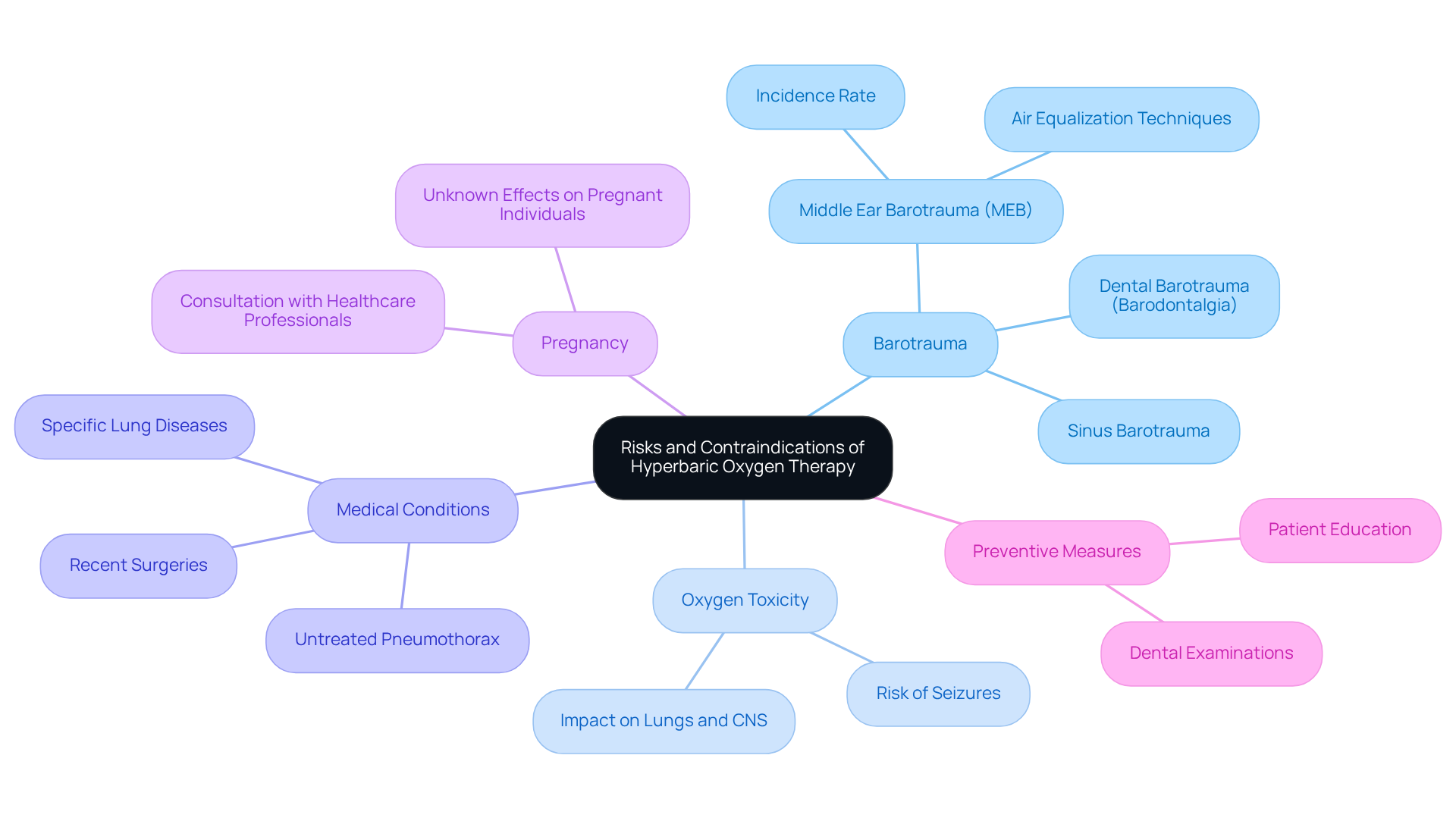
Conclusion
Hyperbaric Oxygen Therapy (HBOT) emerges as a transformative medical treatment, harnessing the principles of increased pressure to boost oxygen absorption in the body. This innovative approach not only accelerates healing processes but also enhances immune function, offering a wide array of health benefits that address both medical conditions and wellness enhancement. By grasping the mechanisms underlying HBOT, individuals can truly appreciate its pivotal role in fostering recovery and elevating overall health.
The article explores various dimensions of hyperbaric oxygen therapy, underscoring its efficacy in treating chronic wounds, alleviating inflammation, and supporting cognitive function. It delineates the procedures involved, necessary preparations, and potential risks associated with the therapy. By emphasizing the significance of professional guidance and safety measures, it delivers a comprehensive overview that empowers readers to make informed decisions regarding their health journey.
As interest in hyperbaric oxygen therapy continues to surge, it becomes imperative for individuals to weigh its benefits against their personal health goals. Whether recovering from injuries or striving to enhance overall wellness, HBOT presents a promising pathway for improvement. Engaging with healthcare professionals to explore this therapy could represent a pivotal step toward achieving optimal health outcomes.
Frequently Asked Questions
What is Hyperbaric Oxygen Therapy (HBOT)?
Hyperbaric Oxygen Therapy (HBOT) is a specialized medical procedure that involves inhaling pure air in a pressurized environment, which significantly increases the amount of air dissolved in the bloodstream, essential for accelerating the body's healing processes.
How does HBOT work?
The fundamental mechanism of HBOT is based on physics and physiology principles; increased pressure allows the body to absorb more air, which is crucial for cellular repair and regeneration. This therapy stimulates the release of growth factors and stem cells, promoting healing in damaged tissues.
What are the benefits of HBOT?
HBOT effectively reduces fatigue, accelerates injury recovery, strengthens the immune system, and alleviates oxidative stress. A single 60-minute session can provide benefits comparable to consuming 60 liters of hydrogen-infused water.
What conditions can HBOT treat?
HBOT is particularly beneficial for conditions such as decompression sickness, carbon monoxide poisoning, and chronic wounds. It enhances oxygen supply to damaged tissues, promoting quicker recovery.
How long do HBOT sessions typically last?
HBOT sessions typically last between 60 to 90 minutes, with the number of sessions tailored to the specific medical condition being treated.
What are the experiences during an HBOT session?
During an HBOT session, clients can relax, listen to music, meditate, or use their devices, which maximizes the therapeutic experience.
What research supports the effectiveness of HBOT?
Research indicates that oxygen is essential for healing, and studies have shown significant improvements in quality of life, sleep quality, and pain intensity in post-COVID conditions, with benefits lasting up to a year after treatment.
How does HBOT influence inflammation and immune response?
HBOT positively influences inflammation and immune response, particularly benefiting individuals with chronic conditions, as noted by medical professionals.

